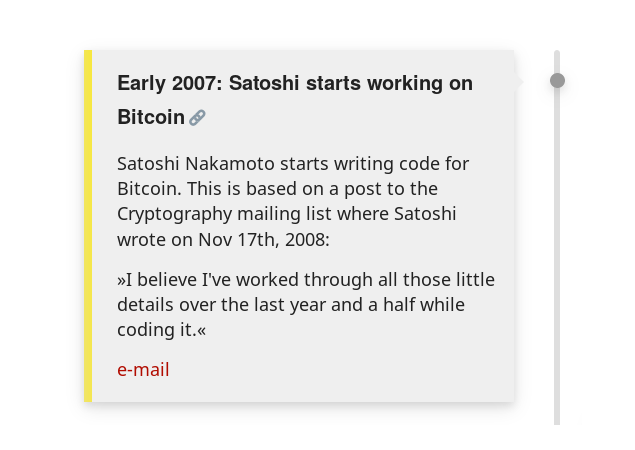Frequently Asked Questions: Bitcoin Transaction Monitor
Thursday, October 10, 2019The Bitcoin Transaction Monitor provides deeper insights into the usage of the Bitcoin network by showing transactions by time and feerate. This post answers frequently asked questions about the Bitcoin Transaction Monitor itself.

Why did you build a Bitcoin Transaction Monitor?
With Bitcoin, a permissionless network has been created, where everybody can join. Companies, services, and individual users broadcast transactions to the network. Plotting these transactions by arrival time and feerate reveals interesting activity patterns. The Bitcoin Transaction Monitor is built to visualize, share and inform about these patterns. I hope it lets us gain deeper insights into the usage of the Bitcoin network.
Where do you get the data about the transactions from?
I run a Bitcoin Core node connected to the Bitcoin network, which passes valid transactions to memod (mempool observer daemon) over the ZMQ-interface.
Each passed transaction is processed by memod and written into a database.
Doesn’t the Transaction Monitor reveal private information about transactions ?
The Bitcoin Transaction Monitor shows activity and usage patterns of the Bitcoin network. This information can be (and probably is already) used by bad actors to weaken the privacy or even completely depseudonymize transactions. Yet this information broadcasted on the Bitcoin network is entirely public. Raising the awareness of what transactions can reveal is far more valuable than hiding public information.
If I can build a Transaction Monitor in my free time that visualizes this data and could run on your laptop, what can a motivated bad actor do with far more resources?
What are future ideas for the Bitcoin Transaction Monitor?
Provided I have the time and come up with an efficient architecture I’d like to archive and display historical data. Additionally, providing a live visualization of incoming transactions would be interesting. There is a GitHub issue which has a few feature suggestions.
Project: Bitcoin Transaction Monitor GitHub issue with feature suggestions


